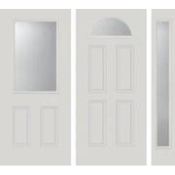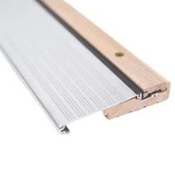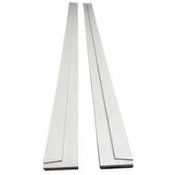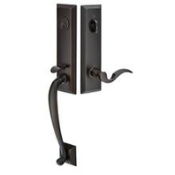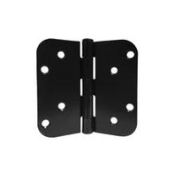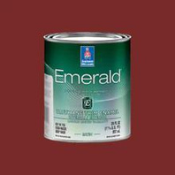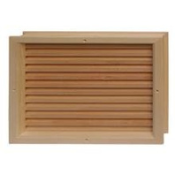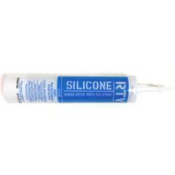
Creating a peaceful sanctuary within your home has never been more important in today's fast-paced world. One of the most effective ways to achieve this is by soundproofing your Interior Doors with Frame. This ultimate guide will walk you through the importance of soundproofing, the best materials and designs, installation tips, and how to maintain and upgrade your soundproof door frames to ensure a quieter, more serene living environment.
Key Takeaways
- Soundproof Interior Doors with frames significantly reduce noise pollution, enhancing the tranquility of your home.
- Choosing the right materials and innovative designs can greatly improve the effectiveness of soundproofing.
- Proper installation is crucial for maximizing the soundproofing capabilities of your door frame.
- Regular maintenance and timely upgrades can prolong the effectiveness of your soundproof door frame.
- Seeking the help of door experts can be beneficial for complex installations or significant upgrades.
How door frames contribute to sound insulation
Interior Doors with Frames play a pivotal role in sound insulation by acting as barriers that prevent noise from traveling between rooms. Understanding how sound transmission works and identifying common weak points in door frames can significantly enhance your home's quietness. Investing in soundproof door frames offers numerous benefits, including improved privacy and a more serene living environment.
Understanding how sound transmission works and identifying common weak points in door frames can significantly enhance your home's quietness. Here are some key pointers to consider:
Best materials and designs for soundproof door frames

When it comes to creating a quiet home design, selecting the right materials and designs for soundproof door frames is crucial. The right combination can significantly enhance noise reduction and improve overall comfort.
-
Top soundproofing materials
To achieve effective soundproofing, consider using the following sound insulation materials for your Interior Doors with Frames:
- Medium-Density Fiberboard (MDF): Adding a layer of MDF can increase the door's mass, making it more effective at blocking sound. The heavier the door, the better it blocks sound.
- Green Glue: This viscoelastic compound is applied between layers of MDF or other materials to dampen sound vibrations.
- Soundproofing rubber: Used to seal gaps around the door frame, preventing sound from leaking through.
- Caulking: Ideal for sealing small cracks and gaps around the door frame.
-
Automatic door bottom: This device seals the gap at the bottom of the door when it is closed, further enhancing soundproofing.
-
Innovative door frame designs
Modern noise reduction doors come in various designs that not only look great but also offer superior soundproofing. Some notable options include:
- Sound Lock™ Soundproof Door: Combines a beautiful wood aesthetic with the highest level of soundproofing, customizable in size, color, and more.
- Solid wood doors: Interior Doors with Frames made of solid wood are more soundproof than those made of a lighter, less dense material. Adding layers, such as an acoustic panel, to the door can further enhance its sound-blocking capabilities.
- Studio soundproof doors: Available in materials like wood and steel, each offering distinct benefits. Wooden doors, for instance, provide a balance of aesthetics and soundproofing.
-
Cost and effectiveness
When choosing materials and designs for soundproof Interior Doors with Frames, it's essential to balance cost and effectiveness. Here are some considerations:
- Material costs: MDF and Green Glue are relatively affordable and provide excellent soundproofing when used together.
- Installation costs: Professional installation can ensure optimal performance but may add to the overall expense.
- Long-term benefits: Investing in high-quality materials and designs can lead to significant noise reduction and a more comfortable living environment, making it a worthwhile investment in the long run.
Installation tips for maximizing soundproofing

-
Preparing the doorframe
Before you begin, it's crucial to inspect the Interior Doors with Frames for any gaps or cracks that may need sealing. Use weatherstripping to seal any visible gaps. This initial step ensures that the frame is ready for the new soundproofing materials.
-
Step-by-step installation guide
- Uninstall the existing door: Carefully remove the current door from its hinges.
- Prepare the frame: Clean the door frame thoroughly and ensure it is free from any debris.
- Apply acoustic sealant: Use an acoustic sealant around the edges of the door frame to prevent sound leakage.
- Install the new door: Securely mount the new noise-blocking door to ensure maximum performance.
- Add additional layers: Consider adding another layer of MDF or mass-loaded vinyl to the door for extra soundproofing.
-
Common mistakes to avoid
- Ignoring small gaps: Even tiny gaps can significantly reduce the effectiveness of your soundproofing efforts.
- Using the wrong materials: Ensure you use materials specifically designed for soundproofing, such as acoustic caulk and soundproofing rubber.
-
Rushing the installation: Take your time to ensure each step is completed correctly for the best results.
By following these soundproofing tips, you can significantly improve the noise-reduction capabilities of your Interior Doors with Frames.
Maintaining and upgrading your soundproof doorframe
-
Regular maintenance tips
To ensure your soundproof Interior Doors with Frames remain effective, it's crucial to regularly inspect soundproofing materials. Over time, materials like sealants, weatherstripping, and door sweeps can wear out or become less effective. Here are some maintenance tips:
- Inspect and replace worn-out weatherstripping.
- Check for any gaps or cracks and seal them with acoustic caulk.
- Ensure the door sweep is in good condition and replace it if necessary.
-
Upgrading existing door frames
If you are considering upgrading your Interior Doors with Frames and desire a quieter and more peaceful living space, invest in acoustic composite doors. These doors are designed to provide superior sound insulation. Additionally, you can add weather stripping or another soft foam stripping to cracks or gaps along the door frame to further reduce noise.
When to seek professional help
While many soundproofing tasks can be done by homeowners, there are times when professional help is needed. If you notice significant gaps or structural issues with your door frame, it may be time to consult a professional. They can provide expert advice and ensure that your soundproofing efforts are effective and long-lasting.
Maintaining and upgrading your soundproof door frame is essential for ensuring long-lasting performance and optimal noise reduction. For expert advice and top-quality products, visit Peasedoors today and explore our extensive range of door solutions.
Conclusion
Soundproofing your home's Interior Doors with Frames is more than just a practical solution; it's an investment in your overall well-being. By understanding how door frames contribute to sound insulation, selecting the best materials and designs, and following proper installation tips, you can significantly reduce unwanted noise. This guide has provided you with the essential knowledge to transform your living space into a peaceful sanctuary. Remember, the key to effective soundproofing lies in attention to detail and using the right materials. With a well-soundproofed door frame, you can enjoy a quieter, more serene home environment.
Frequently Asked Questions
1. How much noise reduction can I expect from soundproofing my door?
With comprehensive soundproofing, you can achieve a noise reduction of 25-35 decibels, which can make a significant difference in perceived loudness.
2. What materials are best for soundproofing door frames?
Top materials for soundproofing door frames include mass-loaded vinyl, acoustic foam, weatherstripping, and solid wood. These materials help block and absorb sound effectively.
3. Can I soundproof my existing door frame, or do I need to install a new one?
You can soundproof your existing Interior Doors with Frames by adding soundproofing materials like weatherstripping, door sweeps, and acoustic panels. However, for maximum effectiveness, a new soundproof door frame might be recommended.
4. How difficult is it to install a soundproof door frame on my own?
Installing a soundproof door frame can be a DIY project if you have basic carpentry skills. It involves preparing the door frame, applying soundproofing materials, and ensuring a tight seal. However, professional installation is available for those who prefer it.
5. Are there any common mistakes to avoid when soundproofing a door frame?
Common mistakes include not sealing all gaps properly, using insufficient soundproofing materials, and overlooking the importance of the door's weight. Ensuring a tight seal and using adequate materials are crucial for effective soundproofing.
6. How often should I maintain my soundproof door frame?
Regular maintenance is recommended to ensure the effectiveness of your soundproof door frame. Check for any gaps, wear and tear on weatherstripping, and integrity of the materials every 6-12 months.


